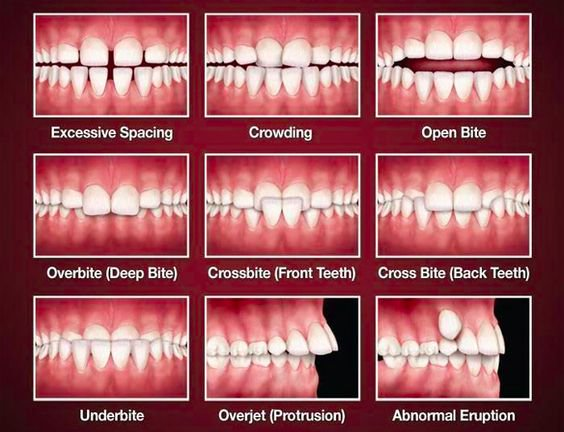What is Malocclusion?
Malocclusion of the teeth is a misalignment problem that can lead to serious oral health complications. The teeth won’t be able to perform vital functions if they’re misaligned.

What are the Features of normal occlusion?
Occlusion is a term that is used to refer to the alignment of your teeth. Ideally, your teeth should fit easily within your mouth without any crowding or spacing issues. Also, none of your teeth should be rotated or twisted. The teeth of your upper jaw should slightly overlap the teeth of your lower jaw so that the pointed ridges of your molars fit into the groves of the opposite molar.
Deviations from ideal occlusion are known as malocclusion. The type of deviation varies, but any type of misalignment can cause issues. Alignment of upper teeth is needed to prevent the cheeks and lips from being bitten, while alignment of lower teeth is needed to protect the tongue from being bitten.
What Causes Malocclusion?
Malocclusion is usually an inherited condition. This means it can be passed down from one generation to the next.
There are some conditions or habits that may change the shape and structure of the jaw. These include:
- Cleft lip and palate
- Frequent use of a pacifier after the age of 3
- Prolonged use of bottle feeding in early childhood
- Thumb sucking in early childhood
- Injuries that result in the misalignment of the jaw
- Tumors in the mouth or jaw
- Abnormally shaped or impacted teeth
- Airway obstruction (mouth breathing), potentially caused by allergies or by enlarged adenoids or tonsils
What Are the Symptoms of a Malocclusion?
Depending on the classification of malocclusion, the symptoms of the disorder may be subtle or severe. Typical symptoms of malocclusion include:
- Improper alignment of the teeth
- Alteration in the appearance of the face
- Frequent biting of the inner cheeks or tongue
- Discomfort when chewing or biting
- Speech problems
- Breathing through the mouth rather than the nose
Diagnosing and Classifying Malocclusions
Malocclusion of teeth is typically diagnosed through routine dental exams. Your dentist will examine your teeth and may perform dental X-rays to determine if your teeth are properly aligned. If malocclusion is detected, it will be classified by its type and severity. There are three major classes of malocclusion:
Class 1
Class 1 malocclusion is diagnosed when the upper teeth overlap the lower teeth. In this type of malocclusion, the bite is normal and the overlap is slight. Class 1 malocclusion is the most common classification of malocclusion.
Class 2
Class 2 malocclusion is diagnosed when a severe overbite is present. This condition, known as retrognathism (or retrognathia), means that the upper teeth and jaw significantly overlap the lower jaw and teeth.
Class 3
Class 3 malocclusion is also diagnosed when there’s a severe underbite. This condition, known as prognathism, means that the lower jaw protrudes forward. This causes the lower teeth to overlap the upper teeth and jaw.
How Is a Malocclusion of the Teeth Treated?
Most people with mild malocclusion will not require any treatment. Depending on your type of malocclusion, your dentist may recommend various treatments. These can include:
- Braces to correct the position of the teeth
- Removal of teeth to correct overcrowding
- Reshaping, bonding, or capping of teeth
- Surgery to reshape or shorten the jaw
- Wires or plates to stabilize the jaw bone
How Can Malocclusion Be Prevented?
Preventing the disorder can be difficult because most cases of malocclusion are hereditary. Parents of young children should limit pacifier and bottle use to help reduce changes in the development of the jaw. Early detection of malocclusion may help cut down on the length (and severity) of the treatment needed to correct the problem.
